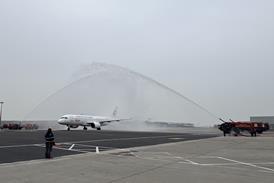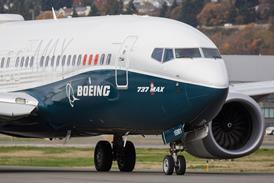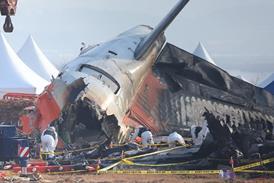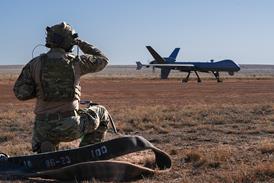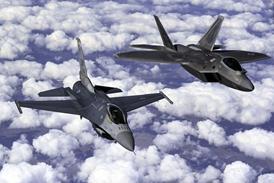Dire predictions of an economic downturn in the USA seem premature, much to the relief of the ebullient airframers which, with their bulging orders and healthy backlogs, are enjoying one of the most successful periods in the industry's history.
This trend looks set to continue, according to business aviation forecasts by manufacturers Honeywell Aerospace and Rolls-Royce, which are expecting the world's business jet manufacturers to set a new delivery record this year. Honeywell predicts that over the next decade, the industry will ship more than 12,000 aircraft, worth $195 billion.
Corporate profits, stock market performance and Gross Domestic Product growth are the key indicators of business jet market health. The stability of the US economy - home to the world's largest general aviation market - has played a pivotal role in sustaining industry growth, but the landscape is changing.
The geographic concentration of aircraft has begun to shift markedly over the past 12 months as thriving new economies, particularly those of Russia, India, China and within the Middle East, spawn a new generation of business aircraft buyers and users, forcing the airframers to explore these markets with renewed vigour.
The frenzy of activity in these countries over the past year led to the launch last September of Jet Expo, Russia's first dedicated business aviation show, and later this month Dubai will play host to the inaugural Middle East Business Aviation exhibition. Also, business and general aviation is set to be a significant feature of the Bangalore Air Show in February.
While economic stability is a fundamental ingredient for sustaining demand, the importance of introducing new aircraft models cannot be understated. Soaring aircraft deliveries last year were boosted by the entry into service of new aircraft with big order backlogs, including the Cessna Citation Mustang entry-level jet and Bombardier's Global 5000, and the ramping up of popular models such as the super mid-size Challenger 300.
This year promises to be bullish, opening with the service entry of the Challenger 605, Bombardier's latest upgrade of its best-selling business jet. This will be followed by the certification and first deliveries of Dassault's long-awaited Falcon 7X ultra-long-range business jet and the defuelled Falcon 2000DX. The French manufacturer has also pledged to begin developing its super mid-size aircraft this year.
Mid-size market
Raytheon Aircraft's much-delayed super mid-size Hawker 4000, which gained type approval in November, is set to enter service in March. The Wichita-based airframer, which was sold late last month to Onex and Goldman Sachs, is also set to introduce later this year its latest mid-size offerings, the Hawker 750 and 900XP.
Perhaps the biggest event of the year will be service entry of the first of the new wave of very light jets, including Eclipse Aviation's Eclipse 500 and Adam Aircraft's A700. Their introduction will spark the launch of the first of a new breed of air taxi operations, starting in the USA this year with Florida-based Dayjet and Magnum Jet of Houston, Texas.
Italy's Piaggio is expected to make a decision early in the year to enter the business jet arena with an aircraft widely believed to be larger than its six/eight-seat P180 Avanti twin-pusher.
It will be a busy year ahead for Cessna, the only airframer believed to be looking at new products across a broad spectrum. At the top end of the market, it will decide whether to proceed with developing its large cabin concept, a mock-up of which was unveiled at October's National Business Aviation Association convention. At the bottom end, Cessna will decide whether to launch production of its light sport aircraft (LSA), dubbed the Sport. The presence in the LSA market of a well-established and respected brand would help boost the credibility of this fledgling, yet increasingly crowded, sector.
Cessna may also launch a new single, high-performance turboprop to fill the gap between the Mustang and the company's top-end piston singles - another market sector in which Cessna is seeking to increase its competitive edge with its Next Generation Piston family under development. While Cessna considers its strategy, turboprops continue their renaissance, boosted by rising fuel prices. The year will see the availability of several such aircraft - Extra Aircraft's EA-500, VulcanAir's A-Viator, formerly Viator, and Quest Aircraft's Kodiak. Operators and manufacturers hope 2007 will at last bring approval of commercial single-engine instrument flight rules operations in Europe after a wait of more than a decade.
The civil helicopter market is also booming. Honeywell projects sales of 6,000 civil turbine helicopters from 2006-2016, with much of the demand expected from the homeland security, law enforcement, surveillance and corporate transport markets, particularly in the Middle East, Europe and the USA.
Helicopter sales up
Bell continues to challenge Eurocopter's domination of the civil helicopter market and will certificate and deliver its new Model 429 light twin this year. Eurocopter is responding with its AS355NP and EC135P2i/T2i light twin upgrades, due to enter service in April. The BA609 civil tiltrotor programme is expected to pick up momentum this year, with flight testing continuing in the USA and Italy, but certification is not planned until 2009.
For the US general aviation community, the highly contentious issue of user fees - direct charges for access to the US national airspace system - should reach its climax this year. The FAA's current four-year authorisation ends in September and the Authority is expected to present its 2007 budget request next month, which is widely predicted to propose user fees. The GA industry has fought a tough battle, particularly over the past 12 months, to avoid the introduction of these fees and if the fight is lost, it could threaten business aviation's so-far robust recovery.
Source: Flight International

